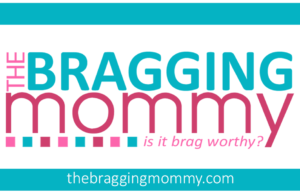Understanding Skincare and the Role of Hypochlorous Acid in a Modern Regimen
In an era where skincare trends emerge almost as rapidly as social media posts, it can be overwhelming to determine which products truly deserve a place on your bathroom shelf. Amidst the endless stream of serums, toners, and miracle creams, one ingredient is quietly earning its spot as a skincare essential: hypochlorous acid.

This unassuming compound is creating buzz in dermatology and esthetic circles alike—not just for its science-backed efficacy, but for its gentle, skin-loving nature. So what exactly is hypochlorous acid, and how does it fit into a thoughtful, effective skincare routine? Let’s dive deep into what makes this ingredient unique and how to incorporate it into your daily regimen.
One of the biggest benefits of hypochlorous acid face spray is its versatility. Whether you’re dealing with acne, redness, sensitivity, or post-procedure irritation, this spray can step in to help calm, cleanse, and protect your skin. Its antimicrobial properties make it especially effective at reducing bacteria that contribute to breakouts, without drying out or irritating the skin like traditional acne treatments often do.
A Foundation in Skincare: What Your Skin Needs
Before exploring hypochlorous acid, it’s important to understand the core pillars of good skincare. No matter your skin type, the goals are generally the same: maintain hydration, protect the skin barrier, minimize irritation or inflammation, and prevent damage from environmental stressors like pollution and UV radiation.
The basic structure of a skincare routine includes:
- Toning (optional): Balancing pH and prepping skin for actives.
- Treatments: Applying serums or ingredients that target specific concerns (e.g., acne, pigmentation, aging).
- Moisturizing: Sealing in hydration to maintain the skin barrier.
- Sun protection: Guarding the skin from UV damage with sunscreen.
As more people become educated about ingredients and the science behind skincare, they seek multitasking products that are effective, safe, and easy to use. That’s where hypochlorous acid comes in.
Hypochlorous Acid Face Spray: A Gentle Powerhouse for Clear, Calm Skin
Skincare enthusiasts are constantly on the lookout for the next revolutionary product—and often, the most powerful ingredients are the ones that work quietly behind the scenes. One such game-changer is hypochlorous acid face spray, a multitasking mist that is quickly becoming a staple in both dermatologist offices and home routines. But what exactly is this product, and why is it gaining so much attention?
It plays a crucial role in fighting off bacteria, reducing inflammation, and speeding up wound healing. In recent years, skincare scientists have harnessed the power of this molecule in topical sprays designed for the face—creating a safe, effective, and remarkably gentle solution for a wide range of skin concerns.
Another major advantage is its soothing, anti-inflammatory nature. For those who struggle with rosacea, eczema, or sensitive skin, hypochlorous acid face spray offers relief without introducing harsh chemicals or fragrances. It acts almost like a “reset button” for the skin—restoring balance and encouraging healing from the inside out.
As skincare continues to evolve toward clean, science-backed, and multifunctional products, hypochlorous acid face spray is carving out a well-deserved place in the spotlight. It’s a perfect example of how gentle can still mean powerful. If you’re looking for a product that soothes, protects, and supports healthy skin without causing irritation, this mist is more than just a trend—it’s a skincare essential.
What Is Hypochlorous Acid?
It plays a key role in the body’s defense system by helping to kill harmful bacteria and neutralize toxins. In skincare, a stabilized form of HOCl is used in topical products like sprays and gels.
Although it might sound harsh (after all, it’s related to chlorine), hypochlorous acid is surprisingly gentle on the skin. It’s non-toxic, non-irritating, and safe for even the most sensitive skin types, including those with eczema, rosacea, or post-procedure sensitivities.
Why Hypochlorous Acid Is a Game-Changer for Skin Health
Hypochlorous acid boasts a number of qualities that make it ideal for skincare:
1. Anti-inflammatory and Antimicrobial Properties
HOCl has the unique ability to kill bacteria, viruses, and fungi, making it a powerful tool for acne-prone or compromised skin. Unlike traditional acne treatments such as benzoyl peroxide or salicylic acid, HOCl doesn’t dry out the skin or cause peeling. It also helps reduce redness and inflammation, making it beneficial for conditions like rosacea or dermatitis.
2. Supports the Skin Barrier
Our skin’s outermost layer—the stratum corneum—is essential for keeping moisture in and irritants out. Hypochlorous acid aids in repairing and protecting this barrier by reducing oxidative stress and minimizing inflammatory responses.
3. Speeds Up Healing
Because HOCl plays a role in wound healing in the body, it can also help skin recover faster from blemishes, sunburns, or even cosmetic procedures such as microneedling or laser treatments. It acts as a calming agent that reduces irritation while accelerating cellular repair.
4. Safe for Daily Use
Unlike some ingredients that should only be used sparingly or require careful layering, HOCl can be used multiple times a day without concern. It’s fragrance-free, alcohol-free, and non-comedogenic, making it ideal for sensitive skin.
How to Incorporate Hypochlorous Acid Spray into Your Routine
Hypochlorous acid face spray is easy to incorporate into your skincare routine. Here’s how it can fit into your morning and evening regimen:
Morning Routine:
- Cleanse: Start with a gentle, non-stripping cleanser.
- Spray HOCl: After cleansing, mist your face with a hypochlorous acid spray. This helps reduce bacteria on the skin and calms any overnight inflammation.
- Serums: Apply any treatment serums such as vitamin C or niacinamide.
- Sunscreen: Finish with broad-spectrum SPF for protection.
Evening Routine:
- HOCl Spray: Spritz your face to help calm inflammation and prep the skin for nighttime repair.
- Treatments: Apply any active treatments such as retinol or peptides.
- Moisturize: Use a hydrating cream to seal in moisture and support the barrier overnight.
Extra Uses:
- Post-exercise: Use it as a refreshing mist after a workout to prevent sweat-related breakouts.
- Maskne Treatment: Spritz on areas prone to irritation or breakouts from face masks.
- Travel Companion: Keep a small bottle in your bag for quick sanitation and skin relief on the go.
- After Shaving or Waxing: Helps reduce redness and the chance of ingrown hairs or folliculitis.
Who Should Use Hypochlorous Acid Spray?
The short answer: almost everyone. But it’s particularly helpful for:
- Acne-prone skin: Reduces bacteria without disrupting the microbiome or causing irritation.
- Sensitive skin types: Ideal for those who react to fragrances, preservatives, or harsh actives.
- Aging skin: Helps minimize inflammation, a key contributor to aging.
- Those recovering from dermatologic procedures: Speeds healing without interfering with results.
Even people with generally healthy skin can benefit from its protective and anti-inflammatory properties as part of their preventative skincare strategy.
Myths and Misconceptions
With any trending skincare ingredient, misinformation can circulate. Let’s address some common myths:
“It’s basically bleach, right?”
No. Although it’s related chemically to chlorine compounds, stabilized hypochlorous acid is entirely different from bleach (sodium hypochlorite). It’s safe for skin and mucous membranes and has been used in wound care for decades.
“It’s too mild to really do anything.”
On the contrary—HOCl’s strength lies in its gentleness. It doesn’t require harshness to be effective. Clinical studies have shown it can kill up to 99.9% of bacteria, reduce inflammation, and support faster healing.
“It replaces everything in your routine.”
While powerful, HOCl spray works best when used in conjunction with other skincare essentials. It enhances rather than replaces your serums and moisturizers.
Choosing the Right Hypochlorous Acid Product
Not all HOCl products are created equal. Look for:
- Concentration: A range of 100-200 ppm (parts per million) is typical and safe for facial use.
- pH Balance: A pH between 4.5 and 6.5 is ideal to match skin’s natural acidity.
- No harsh additives: Avoid formulas with alcohol, artificial fragrance, or unnecessary preservatives.
Brands like Tower 28, Briotech, and Lumion offer reputable, dermatologist-tested options.
Conclusion:
Hypochlorous acid represents the next generation of skincare innovation—where science meets simplicity. It offers a rare combination of safety, efficacy, and versatility that makes it suitable for nearly every skin type and concern.
Whether you’re battling breakouts, recovering from a treatment, or just looking for a way to boost your skin’s natural defenses, a hypochlorous acid face spray might just be the multitasking hero your routine has been missing.


